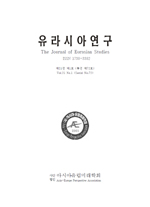- 영문명
- Application of Statute of Limitation in Private Mediation in India
- 발행기관
- 아시아.유럽미래학회
- 저자명
- 정용환(Yonghwan Choung) Kanishka Gupta
- 간행물 정보
- 『유라시아연구』제19권 제4호, 53~66쪽, 전체 14쪽
- 주제분류
- 사회과학 > 사회과학일반
- 파일형태
- 발행일자
- 2022.12.30
4,480원
구매일시로부터 72시간 이내에 다운로드 가능합니다.
이 학술논문 정보는 (주)교보문고와 각 발행기관 사이에 저작물 이용 계약이 체결된 것으로, 교보문고를 통해 제공되고 있습니다.

국문 초록
인도는 오랜 역사를 가진 나라답게 독립 이후 현대적인 법제도와 사법제도를 갖추고 있는 동시에 전통적인 사법제도 또한 갖추고 있다. 분쟁해결과 관련해서는 1989년의 민사소송법 개정을 통해 대체적 분쟁해결제도(Alternative Dispute Resolution, ADR)를 공식적으로 도입하였고, 중재화해법(Arbitration and Conciliation Act)를 통해 중재와 화해를 적극적으로 제도화하였다. 그에 비하여 조정제도는 법원조정과 민간조정을 통하여 실제로는 활용되었으나, 중재에 비하여 상대적으로 법제도화에서 벗어나 있었다. 이러한 문제점을 확인하고 인도의회는 2021년에 조정법안을 발의하였다.
본고는 인도에서 2021년에 발의한 조정법안에 대하여 살펴본다. 현재 인도 내에서 활용되고 있는 조정제도와 조정법안과의 괴리를 확인하고 그 차이를 줄이기 위한 방안을 제시하고자 한다. 특히, 민간조정이 실제 활용되고 있음에도 불구하고 이에 대한 일반인의 법적 인식은 전혀 없는 상황이고, 조정법안 조차도 이에 대한 언급이 없으므로 악용의 가능성이 높다. 따라서, 시효 적용상의 문제를 민간조정 절차에서 살펴보고 그 해결책을 찾아보고자 한다. 그리고 현재 인도 민간조정은 법원의 소송절차와 연계되지 않음에도 불구하고, 민간조정에 의한 합의 조차 법원의 승인을 거치게 하고 있다.
인도 중재화해법(Arbitration and Conciliation Act)은 시효법(Limitation Act)이 명백히 적용됨을 선언하고 있으나, 인도조정법안은 이에 대해 침묵하고 있다. 이러한 시효적용에 대한 침묵은 민간조정에서 절차상 오남용의 가능성이 높다. 조정절차 또한 단계별로 연계될 수 있는 프로그램에 대한 명확한 규정이 없으므로 분쟁해결제도상 다양한 조정프로그램이 서로 연계하지 못하고 있다. 민간조정이 법원과 연계되지 않기 때문에 소제기의 시점을 명확히 하기도 힘들다. 예를 들어, 악의를 가진 일방당사자는 타방당사자가 공소시효를 넘기도록 유도할 수도 있다. 즉, 일방 당사자가 법원절차 외의 조정만으로 분쟁해결을 시도하는 경우, 이를 악용한 타방당사자가 시효를 도과시킬 수 있는데, 이에 대한 선의 당사자를 위한 구제책이 없다.
인도중재화해법 제43조에 의하면, 중재의 경우 시효법이 명백히 적용되지만, 현재 발의된 조정법은 시효에 대한 규정이 전무하다. 중재기관은 공적 기관(institutionalized)으로 등록되어 있기 때문에 중재제기 시점을 명확히 할 수 있다. 그러나 민간조정의 경우에는 공적 기관으로 등록되지 않으므로 조정제기 시점을 확정하기가 어렵다. 따라서, 본고는 인도 조정법안이 인도 중재화해법 제43조와 유사하게 시효법 적용을 명확히 할 필요가 있다고 제언한다. 민간조정인에 대해 윤리조항(professional ethics)에 의한 시효설명의무를 부과하는 것도 가능할 것이다.
영문 초록
Throughout its long history, the Indian judiciary has functioned as a contemporary legal system, alongside regular Alternative Dispute Resolution (ADR) processes. Arbitration and conciliation programs were institutionalized through the enactment of the Arbitration and Conciliation Act, 1996. Additionally, the 1999 Amendment to the Code of Civil Procedure officially recognized ADR as a supplement to the legal system, allowing judges to refer cases to these processes. However, it was only in 2021 that the Indian Parliament proposed the Mediation Bill, 2021 with a view to officially recognize and institutionalize mediation processes in India.
The purpose of this paper is to review the Indian Mediation Bill, 2021, with a focus on identifying gaps in the mediation process in this Bill, in relation to current practice. In particular, the paper notes the lack of recognition for private mediation processes, although private mediation exists in India. It searches for possible solutions to the problem of identifying the statute of limitation due to the individualized nature of the private mediation process. Currently, even if the private mediation is not court-ordered or court-annexed, the settlement from the process can be reviewed by a judge, and it can be enforced in the same manner as a decree of a civil court.
This omission means there is scope for abuse or misuse of private mediation. One cause for this is that the current Mediation Bill, 2021 is silent on the application of the Limitation Act, 1963. Due to the lack of proper regulation of the mediation process, the multifarious mediation programs have not been harmonized within the entire dispute resolution process. Since private mediation is not directly connected with court proceedings, it will be difficult to identify the initial filing date. Therefore, a party with malicious intent might induce the other to miss the filing date of litigation. If a good-faith party, who does not file a litigation case in the court, sincerely focuses on private mediation to resolve a dispute, they might later be disadvantaged as they were unaware of the effect of the statute of limitation.
The approach of the Mediation Bill can be contrasted with Section 43 of the Arbitration and Conciliation Act, 1996 which simply adopted the application of Limitation Act, allowing all participants to easily identify the effective date of application of the statute. Furthermore, it is easy for the disputing parties to identify the filing date of the arbitral proceedings because the arbitration programs are already institutionalized. In summary, this paper proposes that the Mediation Bill should contain a similar provision to Section 43 of Arbitration Act, to clarify the application of the Limitation Act. Also, we recommend that the Bill should mandate stronger professional ethics for private mediators, to ensure that all parties are clear about the application and impact of the Limitation Act.
목차
Ⅰ. Introduction
Ⅱ. Importance of Statute of Limitation
Ⅲ. Omission in the Mediation Bill 2021
Ⅳ. Analysis of Omission
Ⅴ. Possible Proposals
Ⅵ. Conclusion
Reference
키워드
해당간행물 수록 논문
참고문헌
관련논문
사회과학 > 사회과학일반분야 BEST
- AI와 디지털 문화 산업의 결합에서 저작권 및 윤리적 규범 준수의 필요성 연구
- 종합병원 간호사의 환자안전문화인식과 조직의사소통만족이 안전간호활동에 미치는 영향
- 임상간호사의 환자안전간호활동에 영향을 미치는 요인
사회과학 > 사회과학일반분야 NEW
더보기최근 이용한 논문
교보eBook 첫 방문을 환영 합니다!

신규가입 혜택 지급이 완료 되었습니다.
바로 사용 가능한 교보e캐시 1,000원 (유효기간 7일)
지금 바로 교보eBook의 다양한 콘텐츠를 이용해 보세요!




